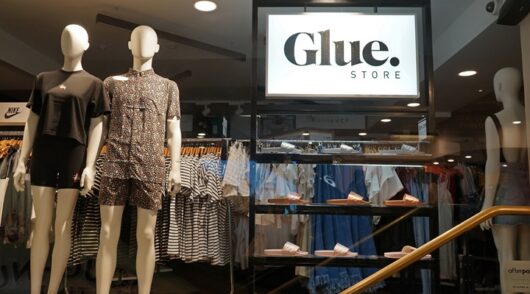With all the disruption that businesses have had to face over the past two years, we are now emerging from the pandemic era into an arena of not only increased competition but also great pressure to improve the retail experience.
Throughout the months of lockdown and quarantine, shoppers have become far more demanding than ever before – and their expectations of immediate service, payment and deliveries have accelerated beyond all forecasts made prior to the advent of Covid-19.
To help retailers navigate the new realities of the customer journey while the fight for fresh customers picks up speed, Inside Retail has joined forces with multi-channel, multi-carrier e-commerce shipping solution provider ShipStation to release a new report on customer behaviour entitled Casting the Net. The report is designed for smart retailers seeking growth outside of their core markets, highlighting four distinct behaviours that have emerged from the latest consumer research.
Written to help retailers broaden their customer base, the report reveals how modern consumers are on the lookout for new inspiration, channels, brands and marketplaces. This is framed as four distinct opportunities for retailers to cast a wider net and engage new shoppers.
In the first instance, Casting the Net shows how shoppers now search for new inspiration in the online space. Long periods of restricted access to in-person shopping have driven consumers towards e-commerce stores, spending more hours shopping online and generally broadening the dimensions of their engagement. During 2019, for example, the average consumer purchased from a total of nine online retailers per year, whereas they’re now shopping from as many as 15 retailers. Consumers are also buying from more product categories than they did in the past, meaning a broader reliance on e-commerce to meet their buying demands.
While the opportunities are clear, the sheer volume of competition between advertisers presents a tough problem for retailers, with all of them vying for maximum consumer attention. Key to solving this problem is understanding the degree to which consumers research their purchases, with 98 per cent of shoppers now reading online reviews before they buy. This suggests that retailers should be offering more inspiration and product discovery opportunities across multiple channels in order to catch the increased volume of customer engagement.
The report examines the phenomenon of unplanned purchasing – not to be confused with impulse buying for low-price items. Unplanned shopping is a direct result of the ease with which consumers can now browse and compare the multitude of SKUs available online, allowing them to discover new products they hadn’t previously considered buying. According to the data, an average consumer makes 2.1 unplanned purchases every three months, 22 per cent of which involve trying a new brand. This matches research suggesting 70 per cent of shoppers don’t consider brand familiarity in their online purchases. Retailers can take advantage of this phenomenon by building their direct-to-customer channels.
Another contributing factor in the rise of unplanned purchasing is the increasing tendency among consumers to explore new channels. Brands taking advantage of this surge in customer curiosity have discovered co-branding to be a powerful way to successfully bolster their reach and improve access to new customers. Research conducted in the US market – which is very likely to comport with consumer attitudes in Australia – suggests that 71 per cent of shoppers have a positive view of co-branded partnerships, while 43 per cent count themselves willing to try a co-branded product involving a company they already like. In Australia, 52 per cent of marketers say that brand partnerships are already a significant part of their promotional strategies.
Marketing directly to consumers has surged during the pandemic era, with roughly half of online shoppers reporting having purchased directly from brands during the past year. Direct brand shoppers are more likely to fall into a younger age group, many of whom are discovering their desired products via social media. This suggests that direct-to-customer channels are best targeted to younger shoppers who are frequent social media users and prone to be interested in trying new brands.
ShipStation’s report also examines how retailers should leverage marketplace shopping, given that marketplaces account for a third of all online purchases. According to the research, enterprise marketplaces have achieved 50 per cent compound growth over the past two years, compared to compound growth of 22 per cent for online retail as a whole over the same period. These increases are only expected to continue, with 73 per cent of shoppers saying they would like to see more of their favourite retailers opening an online marketplace – a clear prompt to businesses who have yet to make the digital transformation.
Casting the Net covers these insights and more, encouraging retailers to leverage the clear opportunities outlined in the research. To read the entire report, click here.






